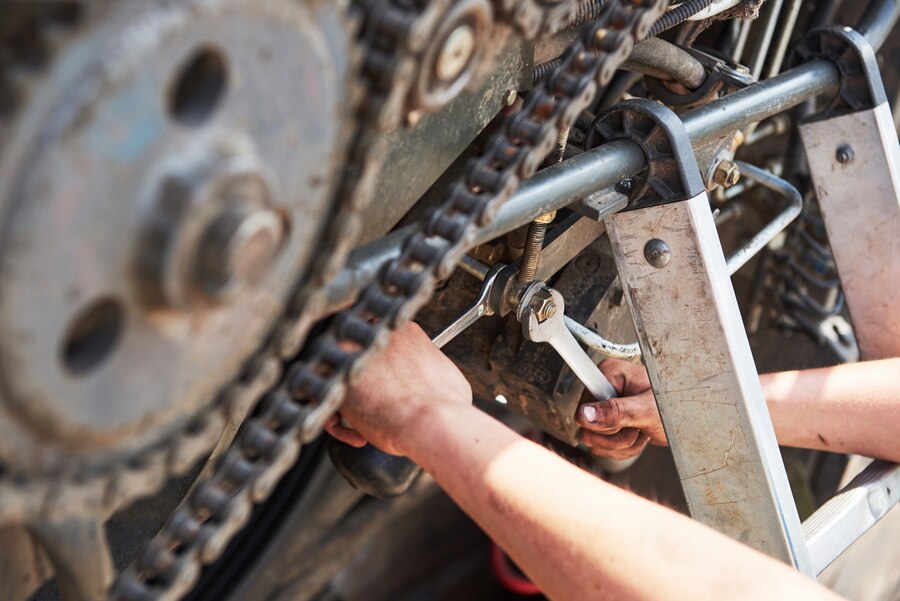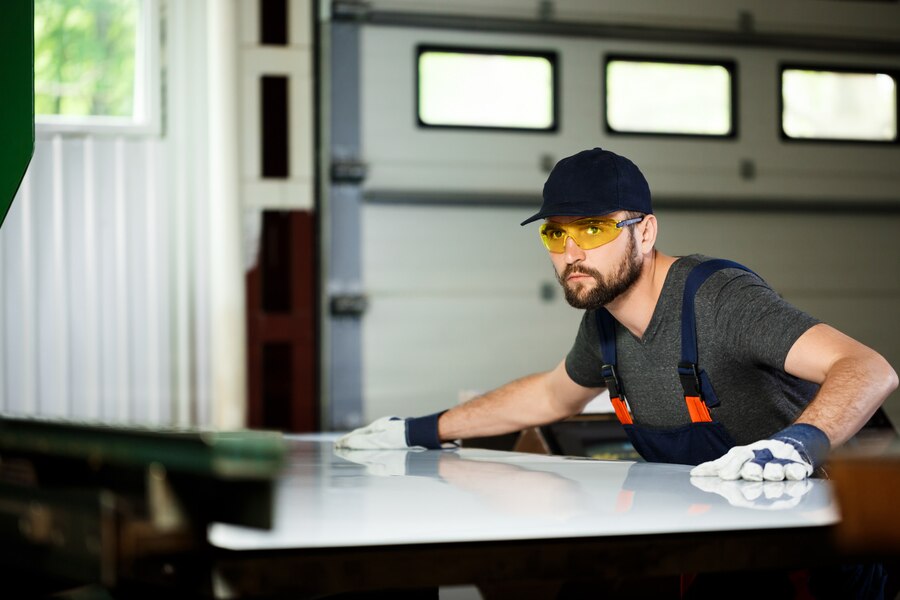Emergency Repairs: What Every Homeowner Should Know
Unexpected emergencies might arise in the world of homeownership at any time, leaving you scrambling to address the issue promptly. From burst pipes to electrical malfunctions, these urgent repairs demand immediate attention to prevent further damage and ensure the safety of your home and loved ones. In our blog series, “Emergency Repairs:
What Every Homeowner Should Know,” we delve into the essential knowledge and practical tips to navigate such crises effectively. Whether you’re a seasoned homeowner or new to the responsibilities of property ownership, this series aims to equip you with the insights and strategies to handle emergencies confidently. Join us as we explore the crucial steps, preventive measures, and expert advice to help you safeguard your home and maintain peace of mind amidst unexpected challenges.
Identifying Common Emergencies
Recognizing common household emergencies is the first step in proactive homeownership. From burst pipes and electrical issues to roof leaks, understanding the potential risks empowers you to respond swiftly and effectively, minimizing damage and ensuring a safer living environment.
Burst Pipes
One typical household emergency is burst pipes, often caused by freezing temperatures or wear over time. Rapidly identifying and addressing these issues can prevent extensive water damage and costly repairs, safeguarding your home’s structural integrity and belongings.
Electrical Malfunctions
Electrical problems, such as faulty wiring or overloaded circuits, pose a significant emergency risk. Recognizing warning signs like flickering lights or tripped circuits helps homeowners address issues promptly, reducing the risk of electrical fires and ensuring household safety.
Roof Leaks
Roof leaks can result from damaged shingles, improper installation, or severe weather conditions. Identifying signs like water stains on ceilings or damp walls allows homeowners to act swiftly, preventing further damage to the interior and preserving the integrity of the home’s roof structure.
Understanding Potential Hazards
Delve into the nuances of potential hazards lurking within your home. Identifying hidden dangers such as gas leaks, faulty wiring, or structural weaknesses is crucial. This knowledge enables homeowners to implement preventative measures and address potential threats before they escalate into emergencies.
Quick Fixes vs. Long-Term Solutions
Learn the delicate balance between quick fixes and long-term solutions. While immediate remedies can provide temporary relief, addressing the root cause ensures lasting repairs. Explore strategies to mitigate immediate risks while planning for comprehensive solutions to prevent recurrent issues.
Importance Of Timely Intervention
Time is of the essence when emergencies strike. Explore the critical role of timely intervention in preventing further damage. From shutting off water sources to securing affected areas, swift action can make a significant difference. Discover the steps to take in those crucial first moments to protect your home.
Essential Tools For Home Repairs
Equip yourself with the necessary tools to handle emergency repairs effectively. From a well-stocked toolbox to specialized equipment for different tasks, having the right tools on hand ensures you can respond promptly to emergencies without delays. Learn about must-have items for every homeowner.
- Toolbox Basics: A well-equipped toolbox is fundamental. Include a hammer, screwdrivers, pliers, and an adjustable wrench for various tasks. These versatile tools are essential for basic repairs around the home, from assembling furniture to fixing loose fixtures.
- Power Drill: A reliable power drill with assorted bits facilitates tasks such as drilling holes, tightening screws, and assembling furniture efficiently. Its versatility makes it indispensable for minor repairs and more extensive DIY projects, offering speed and precision.
- Measuring Tape: Accurate measurements are vital for successful home repairs. A sturdy measuring tape allows you to measure dimensions accurately, ensuring a proper fit for installations, repairs, and other projects. It’s a fundamental tool for precision and efficiency in various tasks.
- Utility Knife: A sharp utility knife is invaluable for cutting cardboard, plastic, or insulation. It’s essential for tasks like opening packages, trimming materials to size, and precision cutting during repairs. A versatile utility knife is a handy addition to any homeowner’s toolkit.
- Adjustable Crescent Wrench: This versatile tool is essential for turning nuts and bolts of different sizes. Its adjustable jaw allows for a customized fit, making it suitable for various tasks. From plumbing repairs to tightening loose fixtures, an adjustable crescent wrench is valuable in home maintenance.
Safety Protocols For DIY Repairs
For homeowners inclined towards do-it-yourself solutions, understanding safety protocols is paramount. Explore guidelines for tackling emergency repairs safely, from using protective gear to following proper procedures. Prioritize your well-being while addressing urgent issues, ensuring a secure environment for you and your home.
Protective Gear
Prioritize safety by wearing appropriate protective gear such as safety goggles, gloves, and a dust mask. These items shield you from hazards like debris, chemicals, and airborne particles, reducing the risk of injuries or respiratory problems during DIY repairs.
Proper Tools Usage
Familiarize yourself with the correct usage of tools to minimize accidents. Follow manufacturer instructions and safety guidelines when operating power tools or sharp instruments. Misusing tools can lead to accidents, so ensure you understand how to handle them safely before starting any DIY project.
Workspace Preparation
Create a safe and organized workspace by removing clutter, securing loose items, and ensuring adequate lighting. Clearing the area minimizes tripping hazards and provides a conducive environment for focused work. Designate a well-ventilated space for projects involving chemicals or fumes to mitigate health risks.
When to Call a Professional
Knowing when to call in the experts is crucial to emergency repairs. Explore signs and scenarios where professional intervention is necessary. From licensed plumbers to electricians, understanding when to seek specialized help ensures comprehensive and reliable solutions for complex issues.
- Electrical Issues: If you experience frequent power outages, sparks from outlets, or buzzing sounds from electrical panels, it’s time to call a licensed electrician. Electrical problems pose serious safety risks and require expertise to diagnose and resolve safely.
- Plumbing Emergencies: Leaking pipes, clogged drains, or sewer backups demand immediate attention from a professional plumber. Attempting DIY fixes without proper knowledge can exacerbate the issue and lead to costly water damage or contamination risks in your home.
- Structural Damage: Noticeable cracks in walls, sagging ceilings, or shifting foundations indicate potential structural issues. Consulting a structural engineer or contractor is crucial to assess the extent of damage and implement appropriate repairs to ensure the safety and stability of your home.
- HVAC System Malfunctions: If your heating, ventilation, or air conditioning system is not functioning correctly, it’s advisable to contact a certified HVAC technician. Faulty HVAC systems can compromise indoor air quality, energy efficiency, and comfort levels, requiring professional diagnosis and repair.
 Budgeting For Emergency Repairs
Budgeting For Emergency Repairs
Financial preparedness is key in navigating unexpected home emergencies. Explore effective budgeting strategies to handle repair costs without compromising your financial stability. From emergency funds to insurance considerations, learn how to manage the financial aspect of unforeseen home repairs.
Preventive Maintenance Strategies
Proactive homeownership involves more than just responding to emergencies. Discover preventive maintenance strategies to minimize the likelihood of unexpected issues. Regular inspections, timely repairs, and routine upkeep play a vital role in safeguarding your home and preventing emergencies before they arise.
- Regular Inspections: Inspect your home’s systems and structures to identify potential issues early. Check for signs of wear and tear, leaks, or damage in plumbing, electrical, and HVAC systems, roofs, walls, and foundations to address problems before they escalate.
- Scheduled Maintenance: Establish a schedule for routine maintenance tasks such as cleaning gutters, replacing air filters, and servicing appliances. Regular upkeep ensures optimal performance, prolongs the lifespan of equipment, and reduces the likelihood of breakdowns or costly repairs in the long run.
- Weatherproofing: Protect your home from the elements by weatherproofing windows, doors, and exterior surfaces. Seal gaps and cracks to prevent water infiltration, drafts, and energy loss, enhancing comfort and efficiency while minimizing the risk of water damage or structural deterioration over time.
- Landscaping Maintenance: Maintain your landscaping to prevent issues like overgrown vegetation obstructing drainage systems or tree branches posing a hazard to your property. Regular trimming, pruning, and clearing debris help preserve the integrity of your landscape and prevent potential damage to your home.
- Educating Household Members: Educate family members about basic home maintenance tasks and safety protocols. Encourage everyone to participate in upkeep efforts and report any concerns promptly. By fostering a culture of responsibility and awareness, you can collectively ensure the well-being and longevity of your home.
Creating An Emergency Preparedness Plan
Develop a comprehensive emergency preparedness plan for your home. From communication strategies with family members to designated evacuation routes, having a well-thought-out plan ensures everyone is on the same page in times of crisis. Explore the elements of a robust emergency preparedness plan tailored to your home and location.
Conclusion
The journey through “Emergency Repairs: What Every Homeowner Should Know” sheds light on the essential facets of proactive homeownership. By identifying common emergencies and understanding potential hazards, homeowners can equip themselves with the knowledge to respond effectively. Exploring quick fixes versus long-term solutions underscores the importance of addressing underlying issues to prevent recurrent emergencies.
Moreover, emphasizing the significance of timely intervention, essential tools, safety protocols, and knowing when to seek professional assistance lays the groundwork for efficient emergency management. Coupled with insights into budgeting for repairs, preventive maintenance strategies, and creating an emergency preparedness plan, this series empowers homeowners to navigate unexpected challenges confidently, safeguarding their homes and loved ones for years.


 Budgeting For Emergency Repairs
Budgeting For Emergency Repairs